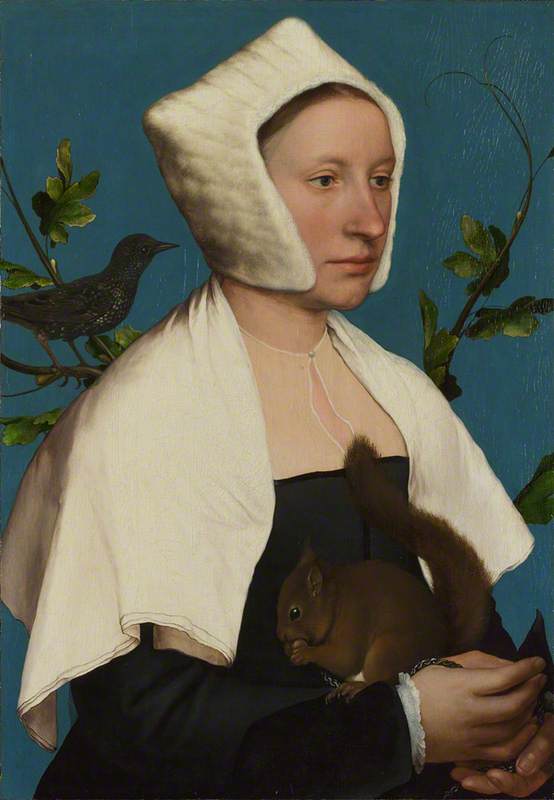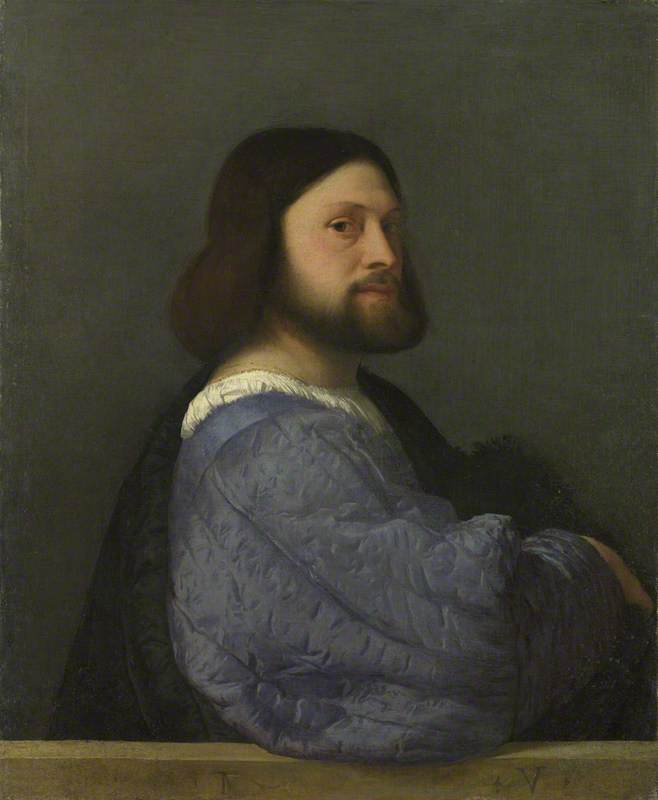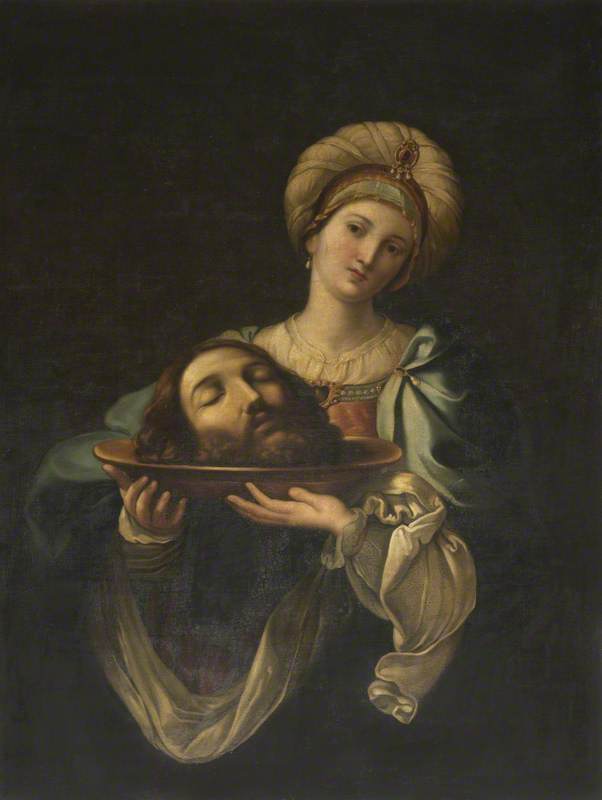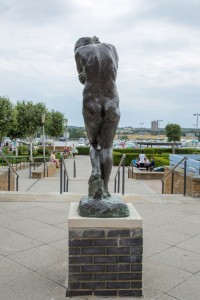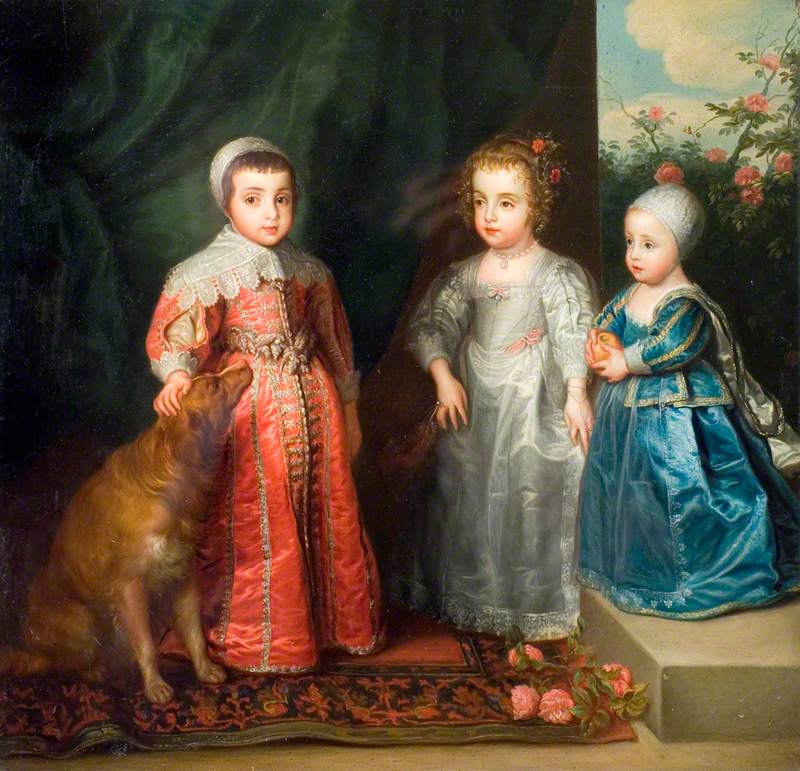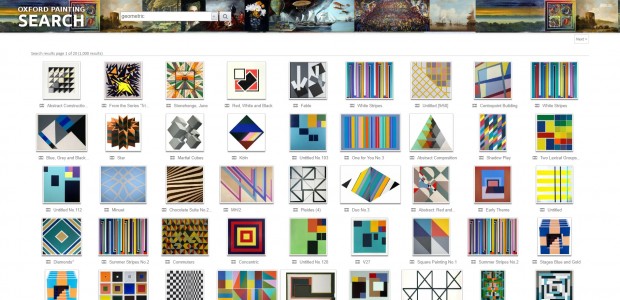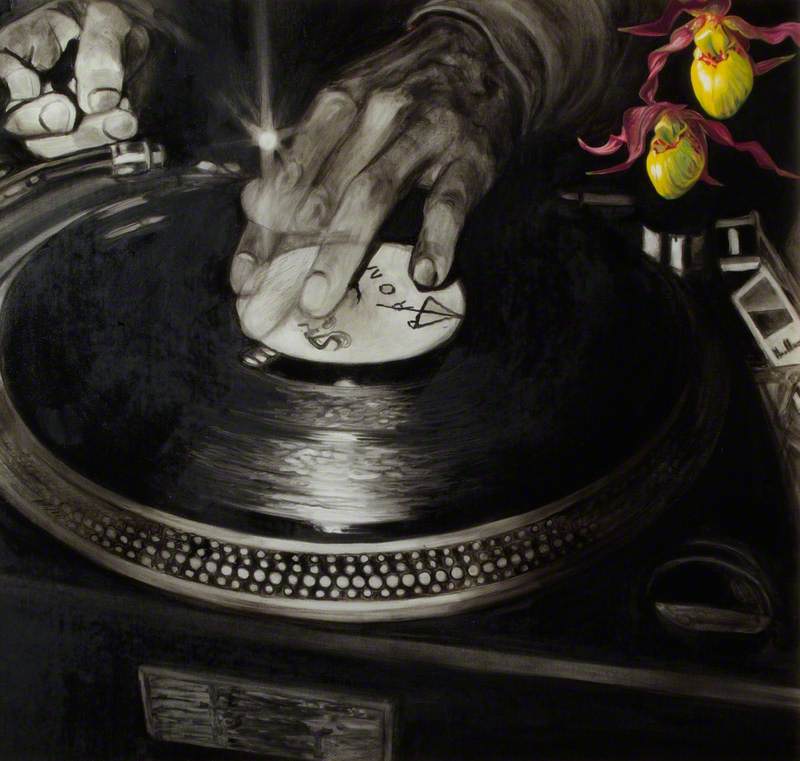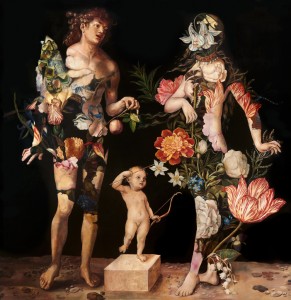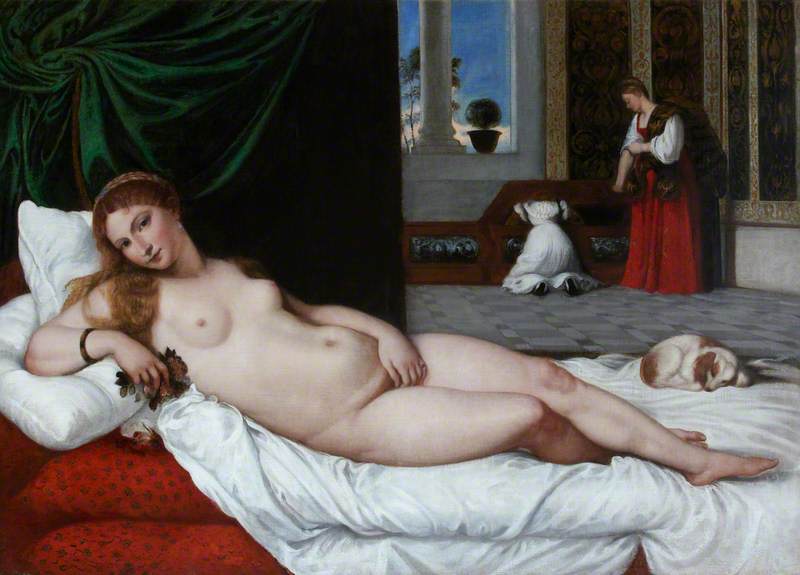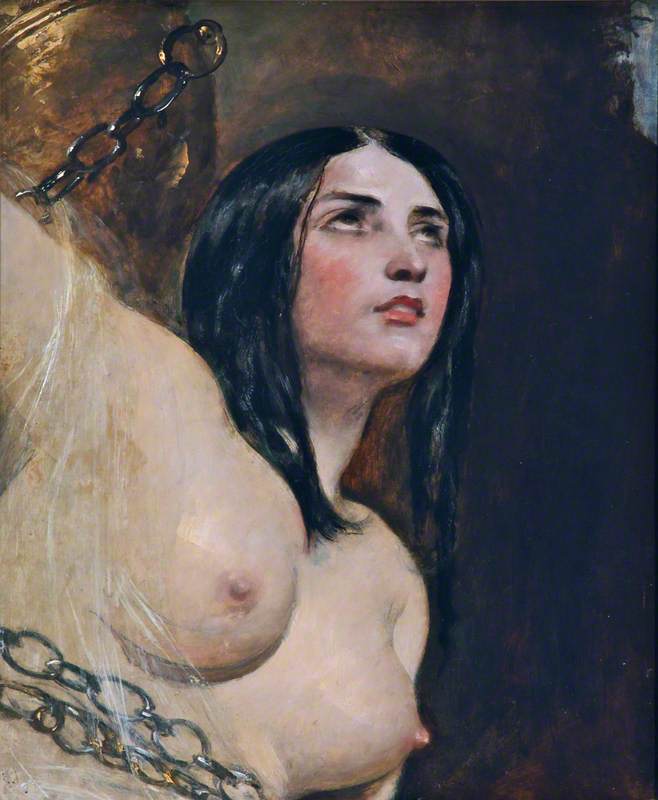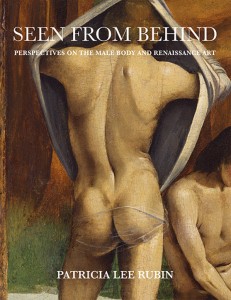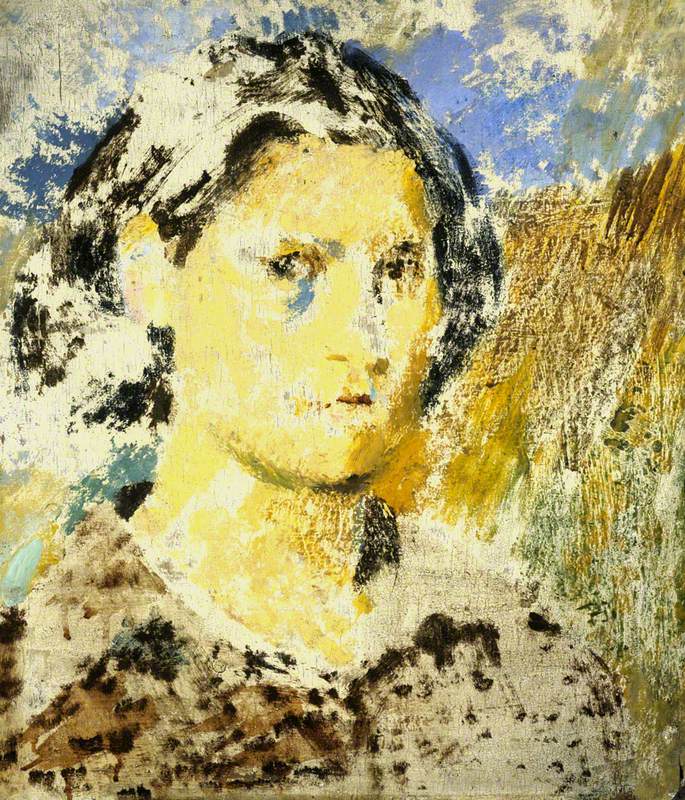For me, After Lucas Cranach the Elder by Central Saint Martins alumnus Raqib Shaw embodies the nature of university art collections as places to inspire, encourage and excite new talent.
After Lucas Cranach the Elder
2001
Raqib Shaw (b.1974) 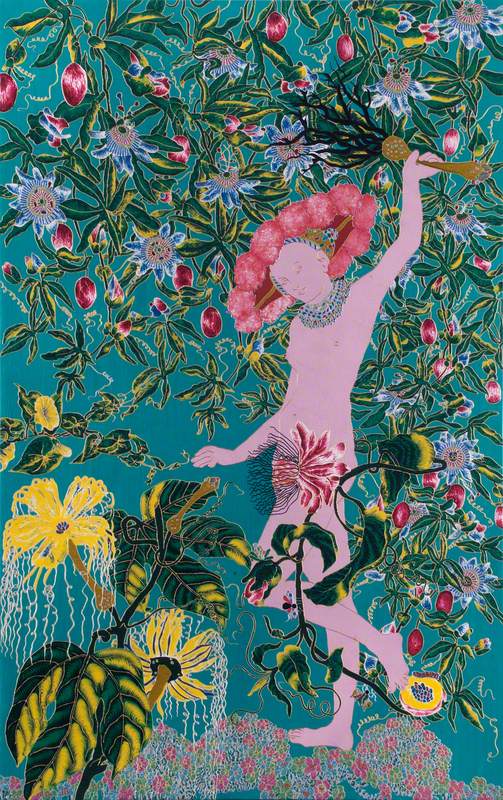
The Central Saint Martins Museum and Study Collection has been collecting work for over a century. The majority of our painting collection dates from after 1989, when St Martin’s School of Art merged with the Central School of Arts and Crafts to become Central Saint Martins. The Collection features fine art and design work from staff, students and alumni, and work purchased from degree shows over the past 25 years.
During my time at the Collection, I have been lucky enough to witness students engaging with artworks first hand; the initial, exciting reaction to a piece, learning about its history, making studies of works, and, importantly, going on to produce new work inspired by what they have seen at the Collection.
Cupid complaining to Venus
about 1525
Lucas Cranach the elder (1472–1553) 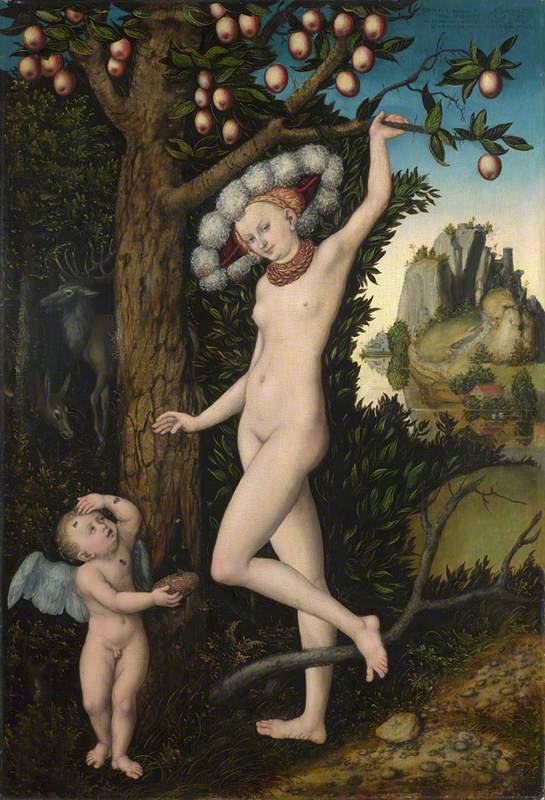
Raqib Shaw’s work looks to the past in a similar way to today’s students, who look to our collections for inspiration. Taking the figure of Venus from Lucas Cranach the elder’s Cupid complaining to Venus (1525), Shaw has recreated Cranach’s work, cherry-picking the proportions of the painting and the figure of Venus to portray his own ideas.
Cranach’s beautiful original work, full of dark tones, life-like flesh and nature is transported into a hyper-coloured, modern version here. The new context for the figure sets up different interpretations and reactions to the familiar scene of Venus and Cupid through Shaw’s intense, jewel-like painting style and acid-bright colours.
Working with earlier artworks is not just a case of copying, but instead is about seeking new interpretations and reactions to familiar pieces with a contemporary eye. After Lucas Cranach the Elder uses the figure of Venus, with her iconic pose and hat to instantly recall the original Cranach painting. By using a well-known work of art within his piece, Shaw enriches his painting with the references and narratives attached to the Cranach.
Shaw’s colour scheme, too, brings the reference away from the original composition and settles it firmly in Shaw’s oeuvre. Exotic plants and hot, complimentary colours of pink and green transport the northern European paintings of Cranach to Shaw’s Indian subcontinent birthplace. In this way, the painting uses the past to draw together different cultural histories.
Shaw moved to London from Kashmir in 1998 and started his BA at CSM that year, eventually going on to study for a master’s degree. At CSM Shaw developed the painting techniques he has continued to refine throughout his career, creating the unmistakable surface effects found on his work.
Using a variety of materials, including metallic enamel paint, Shaw creates his incredible rippled effects by dragging porcupine quills through wet paint, and mixes glitter into the already dazzling colour.
As Cranach has been an inspiration to Shaw, I hope students at CSM will continue to look to our collection to refresh their ideas and look for new angles. Long may the past continue to inspire the work of the future.
Sarah Campbell, Assistant Curator, Central Saint Martins Museum and Study Collection
